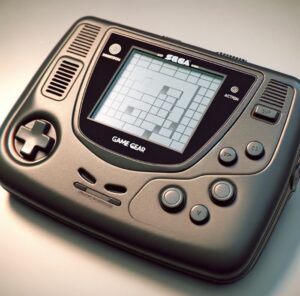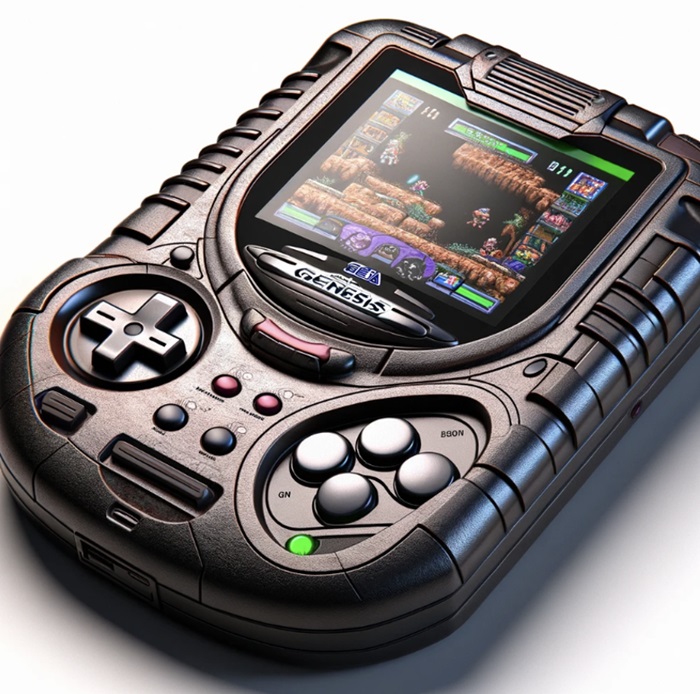Nintendo DS, The Switch, the Game Boy… these are the brands that immediately spring to mind when we think of handheld consoles: all world-famous devices that usually bear the Nintendo logo.
But the Japanese industrial giant within the video games industry has not always completely and utterly dominated the handheld market since the release of its first Game Boy over 30 years ago. Indeed, there have been times when there have been alternative yet good and reliable games consoles that may not have received the widespread recognition they deserved. In this article, we present the five most significant ones.
PlayStation Vita
Nintendo’s excellent marketing has often worked wonders for its own products. However, this has meant that truly excellent consoles from its competitors have often had to lead a shadowy existence – and the PS Vita has a few stories to tell.
The “PS Vita” had technology that was far ahead of its time: it had both front and rear touchscreens, but also cameras on the front and back. And even GPS reception was possible, albeit only in the 3G version, but still! But what really set this console apart was its amazing capabilities. It was able to connect to the PS4, making it possible to play the latest games remotely. It was not uncommon for fanatical users of this console to be able to play titles such as “Metal Gear Solid HD” on the move. And it was also possible to load some films onto an SD card and play them at any time.
But unfortunately, the “Vita” became a victim of time. It was developed to compete with the 3DS. It was a really strong device in many respects, especially from a technical point of view, but in the end it was unable to compete with the sales figures of the competition, which in turn managed to sell up to 75 million units to players. As the “Vita” was only able to achieve a fifth of this figure, it was considered a commercial failure by the producers. Production of this console was discontinued in 2019, meaning that this device can now be considered a collector’s item.
If you’re interested in exploring more about gaming and casinos, check out https://rateitcasino.com/online-casinos/ for reviews and recommendations.
Game Gear
 The Game Gear can tell a completely different story about a competitor on the console market, namely the overpowering competitor “Game Boy”. Great hopes were placed in the Game Gear by Japanese video game manufacturer Sega in the early 1990s, and with much pomp and fanfare this console was released on the Asian market long before European and US customers were able to purchase it.
The Game Gear can tell a completely different story about a competitor on the console market, namely the overpowering competitor “Game Boy”. Great hopes were placed in the Game Gear by Japanese video game manufacturer Sega in the early 1990s, and with much pomp and fanfare this console was released on the Asian market long before European and US customers were able to purchase it.
It featured a unique game library, including some Sega classics such as “Sonic the Hedgehog” and “Streets of Rage”. Sega placed a lot of emphasis on vibrant graphics and the user-friendliness of the device. Sega wanted to surpass the sales of the Game Boy, but in the end this endeavour was doomed to failure.
However, with the Game Gear, gamers had an innovation in their hands, as this mini console felt like the original in terms of gaming. A device that could be taken anywhere and made travelling through your favourite games fly by. The Game Gear still holds a special place in the hearts of many gaming fans of the 90s.
Neo Geo Pocket Colour
 The Pocket Color was first available to buy at the end of the 90s and was characterised by its stylish design and a thumb controller in arcade format. This made it feel like you were playing on a conventional console while playing. This product certainly lived up to its name, with bright and vibrant graphics that were definitely ahead of their time. Nowadays, platforms that serve mobile casinos or smartwatches are likely to offer an even wider range of features, but Neo Geo Pocket Color was still well worth a look.
The Pocket Color was first available to buy at the end of the 90s and was characterised by its stylish design and a thumb controller in arcade format. This made it feel like you were playing on a conventional console while playing. This product certainly lived up to its name, with bright and vibrant graphics that were definitely ahead of their time. Nowadays, platforms that serve mobile casinos or smartwatches are likely to offer an even wider range of features, but Neo Geo Pocket Color was still well worth a look.
Great expectations were placed on the console when it was launched, as it could boast great titles, but the manufacturer SNK was struggling with difficult economic times and the console was soon overtaken by the Game Boy Color in terms of sales figures. This device slowly disappeared from the shelves, but it can still cause quite a stir today with its striking design and packaging.
Bandai WonderSwan
 Right from the start, the WonderSwan was reminiscent of a Nintendo console, and somehow it was, because its product developer Gunpei Yokoi could look back on a long career at Nintendo and only left the company in 1996. He contributed a great deal to the global success of the Game Boy. With the “WonderSwan”, he wanted to bring an independent product onto the market, but he himself was unable to witness its market launch as he died shortly beforehand as a result of a car accident.
Right from the start, the WonderSwan was reminiscent of a Nintendo console, and somehow it was, because its product developer Gunpei Yokoi could look back on a long career at Nintendo and only left the company in 1996. He contributed a great deal to the global success of the Game Boy. With the “WonderSwan”, he wanted to bring an independent product onto the market, but he himself was unable to witness its market launch as he died shortly beforehand as a result of a car accident.
The WonderSwan did not succeed on the market, but this fact in no way reflected the qualities and innovative power of this product. With the help of the WonderWitch software kit, players could also develop their own games. However, this required programming skills, which very few users had. The games available were mainly from Capcom and Namco as well as the remakes of the legendary Final Fantasy series from Squaresoft.
And last but not least, the very thing that characterised this console also led to its demise. Considered too niche by many customers, the WonderSwan fell short, especially in the face of competition from the PS portable. A successful market breakthrough and the hoped-for success failed to materialise.
Genesis Nomad
 The name “Nomad” alone was a good choice for a console, as it could be taken along on any journey. The device was also technically ahead of its time and could be used as both a television and a games console. And thanks to its powerful technical specifications, this console was hailed by various games magazines as the first true 16-bit handheld device.
The name “Nomad” alone was a good choice for a console, as it could be taken along on any journey. The device was also technically ahead of its time and could be used as both a television and a games console. And thanks to its powerful technical specifications, this console was hailed by various games magazines as the first true 16-bit handheld device.
However, fate was not kind to Sega’s “Nomad”, as it was simply left behind alongside the Sega Saturn, which was released around the same time. Its main sales market remained limited to North America and in total only around 1 million units were sold. But many gamers have fond memories of the “Nomad”, especially, but not only, because they could play Street Fighter 2 anytime and anywhere in the mid-90s. And that really counted for something back then.
So if you’re looking for a suitable alternative for your handheld devices, take a look at these beauties that unfortunately haven’t been in the spotlight often enough. Portable consoles are constantly evolving until there is little difference between today’s devices and the console models that were in vogue just a few years ago. But it’s always fun to remember the previous versions that made it possible for today’s models to get to where they are today in terms of technology.


